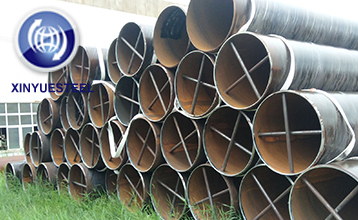Qin Port coal inventory difficult to pick up
Jul. 19, 2021
In June, the completed freight volume of Datong Qinhuangdao line dropped by 13.3% year on year. In July, the average daily freight volume remained at a low level of about 1 million tons. Near the peak season of coal consumption, due to various factors, the delivery situation of Datong Qinhuangdao line is not optimistic. The coal storage in Qinhuangdao port, the main water port, fell below 4 million tons to 3.89 million tons, a new low since June last year. At present, it is a critical period of "peak summer" in South China, where the demand for coal is strong and the daily consumption of power plants is rising; However, the decrease of traffic flow on Daqin line and the sharp drop of inventory in Qinhuangdao Port make it more difficult to guarantee the supply of thermal coal in summer.

In addition to the well-known safety, environmental protection and over production inspection, there is also an important problem of coal price inversion. Since the beginning of this year, the large-scale promotion of vaccines, the accelerated recovery of overseas developed economies, and the substantial expansion of consumer demand for various commodities have triggered the rapid rise of iron ore, steam coal and other commodities. At present, users are not willing to accept high price coal, especially more than 1000 coal. At this time, the price of coal in the producing area is fluctuating at a high level. The price of coal in Datong and other places is high, about 5500 kcal, 800 yuan / ton; Combined with short haul, rail and port transportation costs, the closing price is even more expensive. At present, there are the following problems: first of all, the price rises too fast in the early stage, the pressure of policy risk increases, the traders are afraid of heights, and the willingness of large-scale shipping to the port is not strong, so they are in a wait-and-see situation. Secondly, when the price of port is stagnant and the price of producing area is on the high side, there is upside down phenomenon of water coal in shipment; In order to avoid market risk, coal enterprises and traders increase high profit local coal sales, reduce high risk underground coal, promote the decline of railway traffic volume, and reduce the inventory of Bohai Rim port. In July, not only the coal storage in Qin port decreased rapidly, but also the coal storage in Caofeidian and other ports of SDIC decreased; At present, the four ports of Caofeidian have a total coal storage of 8.48 million tons, a decrease of 1.03 million tons compared with the beginning of this month. Thirdly, the market coal transportation volume accounts for about 15% of the coal water volume of Bohai Rim port, which is indispensable and plays a role of adjustment and supplement in power plant procurement. The temporary stagnation of market coal business not only causes the decline of railway transfer and port transshipment, but also affects the purchase and replenishment of downstream users, and the decline of end-user inventory is inevitable.
The major coal transportation ports around the Bohai Sea are facing this problem, which is the reduction of coal storage; When the peak season comes, the number of coal hauling vessels may continue to increase. If it is allowed to develop, the phenomenon of ships waiting for cargo and berthing, and even the phenomenon of coal storage in power plants decreasing and coal consumption in urgent need may appear. The key to solve this problem is not to limit the port price, but to increase the reliable supply of "three West" coal. By speeding up the resumption of coal mine production, increasing the release of open-pit coal mine capacity, to stabilize the price of the pit, to avoid too fast rise. When the problem of coal price inversion in the port is effectively solved, the enthusiasm of traders for shipping is restored, and the port transfer in volume is increased; And the downstream timely speed up procurement, and actively replenish the warehouse, the coal market supply and demand will be booming, forming a good situation of coordinated development of production and transportation.



